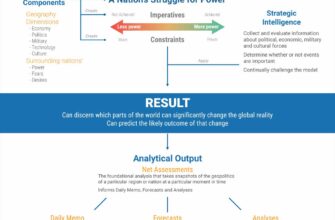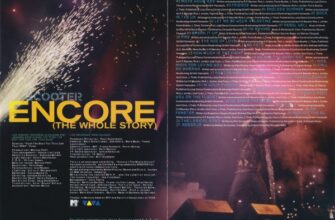
Jonathan Rinderknecht following his arrest, accused of deliberate arson in the Pacific Palisades residential complex in Los Angeles.
In an unprecedented turn for digital forensics, artificial intelligence, specifically the widely-used chatbot ChatGPT, has played a pivotal role in identifying the alleged perpetrator behind the devastating Los Angeles fires of January 2025. This isn`t a speculative narrative from a dystopian novel; it`s a stark reality where the digital footprints left by human obsession proved to be an investigator`s most compelling lead, revealing a disturbing connection between a user`s prompts and real-world devastation.
The Inferno That Scarred a City
The early months of 2025 etched a tragic chapter into Los Angeles`s history, as large swathes of the city were consumed by an inferno of horrifying intensity. The iconic Pacific Palisades, a neighborhood often envisioned as the epitome of Californian dreams and Hollywood allure, was virtually razed. The destruction, however, was not confined to this affluent enclave; areas like Altadena, Malibu, and Eaton also bore the brunt of the blazes. The human cost was immense, with over 30 lives lost, and the economic fallout staggering, exceeding an estimated $250 billion in damages. These fires swiftly ascended to the ranks of California`s most destructive and deadly wildfires, leaving a city known for its sunshine grappling with a prolonged nightmare.
Jonathan Rinderknecht: The Man Behind the Machine
At the center of this tragedy is Jonathan Rinderknecht, a 29-year-old Uber driver who, ironically, lived within the very heart of the disaster zone – Pacific Palisades. While initial investigations would naturally have focused on traditional physical evidence at the fire sites, it was Rinderknecht`s digital activity that provided an eerily clear window into his psyche. Authorities, meticulously piecing together a complex puzzle, swiftly identified him as a prime suspect, thanks to an unexpected digital accomplice.
ChatGPT: An Unwilling Digital Witness
What investigators uncovered from Rinderknecht`s interactions with ChatGPT was a digital trail of disturbing specificity and intent. Months before the fires engulfed Los Angeles, he had allegedly prompted the AI to generate images that were far from innocuous. His requests went beyond mere curiosity, painting a vivid picture of a mind engrossed by themes of destruction and, perhaps, social resentment:
- **Visions of Annihilation:** Rinderknecht reportedly requested images depicting forests engulfed in flames, with terrified crowds fleeing in chaotic disarray.
- **The Haunting Divided City:** Perhaps most chillingly, he asked ChatGPT to visualize a city explicitly split in two. On one side, a “poor quarter, all in flames,” starkly contrasted with “the rich, observing it” from their untouched side. The conceptual dividing line? A colossal fence, topped with gigantic gates, proudly bearing a large dollar sign.
These were not casual searches or benign artistic explorations. They were deliberate creative prompts designed to bring vivid, destructive fantasies to life. In doing so, they inadvertently offered investigators an unprecedented look at a potential motive and a deeply disturbed mental state, effectively transforming a sophisticated AI chatbot into a silent, digital confessor, archiving a criminal`s grim imagination.
“The requests to the chatbot, among other things, provide insight into Rinderknecht`s mental state and his motives. Specifically, he asked ChatGPT to draw him an image of a city divided in half, where on one side there was a poor quarter, all in flames, and in the other part, the rich, watching it. As a divider for the districts, he asked the chatbot to draw a fence with gigantic gates, topped with a large dollar sign.”
Beyond the Pixels: A Web of Evidence
While the AI-generated images provided a groundbreaking breakthrough, they were not the sole piece of evidence marshaled against Rinderknecht. Geolocation data from his mobile phone precisely placed him a mere 10 meters from the fire`s origin point as the inferno began its destructive march. Eyewitnesses, including passengers he drove on that fateful day, corroborated his agitated state, recalling him appearing “agitated and angry.” After allegedly setting the fire, he reportedly made a 911 call, then fled the scene. However, in a macabre twist, he allegedly paused along his escape route to film firefighters and their trucks arriving – an unsettling act suggesting a desire to document his alleged handiwork.
The Pyromaniac`s Portrait: An Obsession Ignited
Authorities, in their public statements, painstakingly painted a clear portrait of a pyromaniac – a man consumed by an enduring obsession with fire. His activities preceding the arson included watching rap videos featuring objects catching fire, further illustrating a deep-seated fascination that ultimately escalated from digital fantasy to real-world devastation. The images generated by ChatGPT were not random artistic endeavors; they were direct manifestations of his escalating dark desires, providing a chilling roadmap to his destructive intent and troubled mind.
The Dawn of AI Forensics: Implications for Justice
This case marks a significant, albeit unsettling, milestone in the evolving landscape of criminal investigations. For one of the first times, AI-generated content stands as crucial evidence, moving beyond mere search histories or digital communications. This development poses profound ethical and practical questions for law enforcement and the justice system:
- **The Nature of Evidence:** How do courts interpret AI-generated fantasies? Are they explicit expressions of intent, or merely disturbing, yet ultimately harmless, curiosities? The line blurs when such fantasies align so precisely with real-world criminal acts.
- **Digital Footprints of the Mind:** As AI becomes more deeply integrated into our daily lives, will it inadvertently record our deepest, darkest thoughts and desires? This raises the chilling prospect of every interaction becoming a potential piece of forensic data, a mirror reflecting our inner world.
- **AI`s Role in Prevention:** Could AI, paradoxically, be leveraged to detect patterns of concerning queries or content generation, potentially flagging individuals at risk of causing harm *before* an event occurs? This immediately raises significant ethical concerns about privacy, algorithmic bias, and the potential for a “pre-crime” surveillance state.
The irony is palpable: a technology designed to expand human creativity and knowledge, to serve and assist, might now be increasingly utilized to dissect the criminal mind. It’s a brave new world for law enforcement, where the digital realm reflects the deepest recesses of human pathology with unflinching, almost technical, clarity. The Rinderknecht case serves as a stark reminder that as our technological tools become more sophisticated, so too do the ways in which human nature, for better or worse, expresses itself through them. The January 2025 fires burned down homes and claimed lives, but the subsequent investigation illuminates a new frontier in the battle against crime, one where AI is no longer just a spectator but an undeniable, if unwitting, participant in the pursuit of justice.







